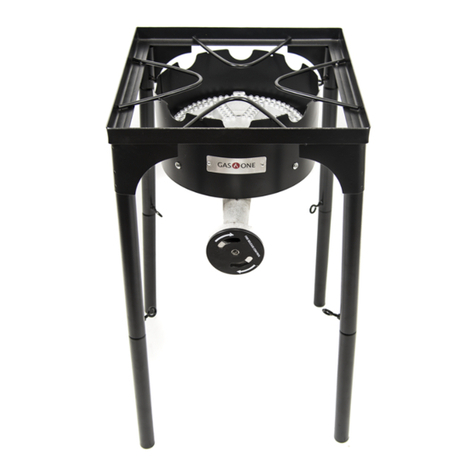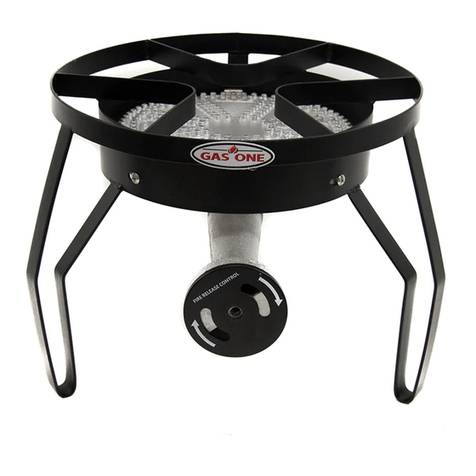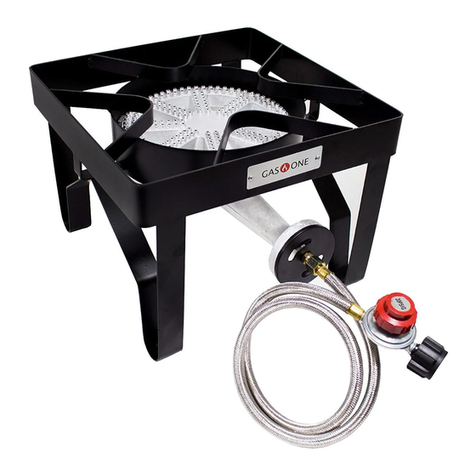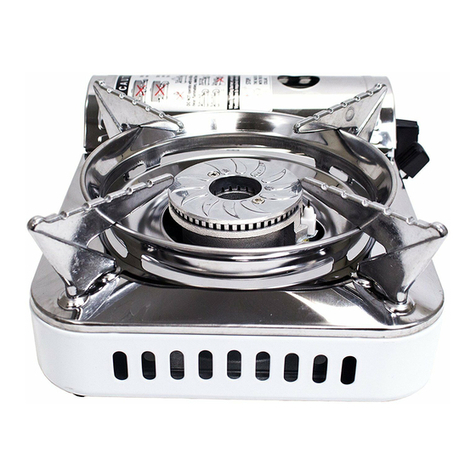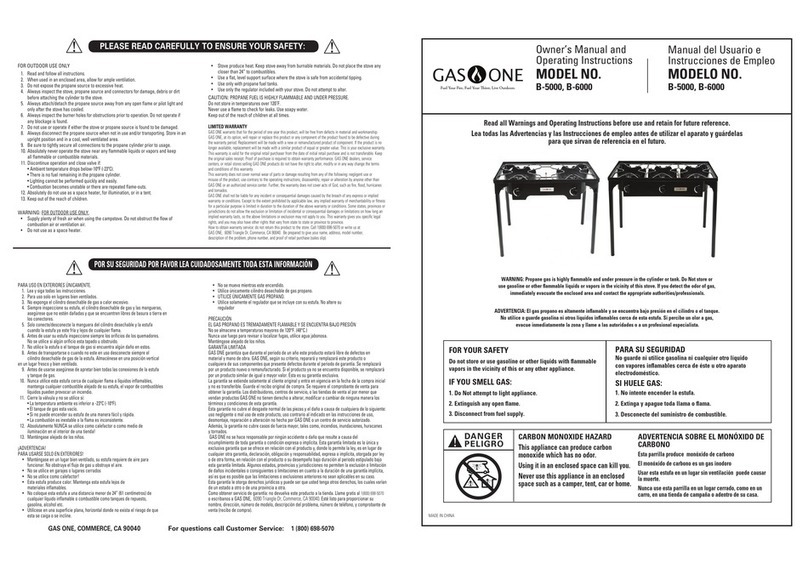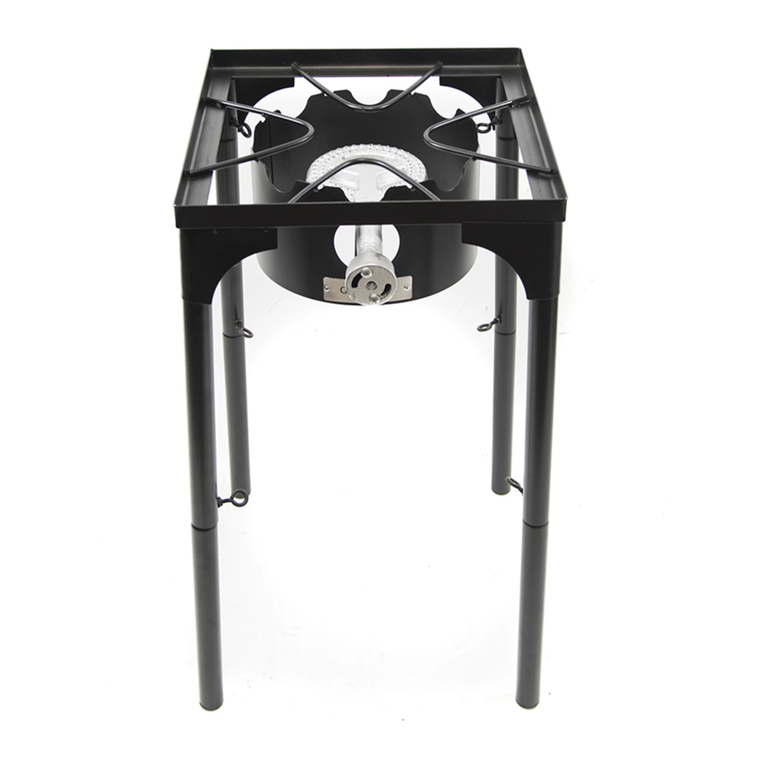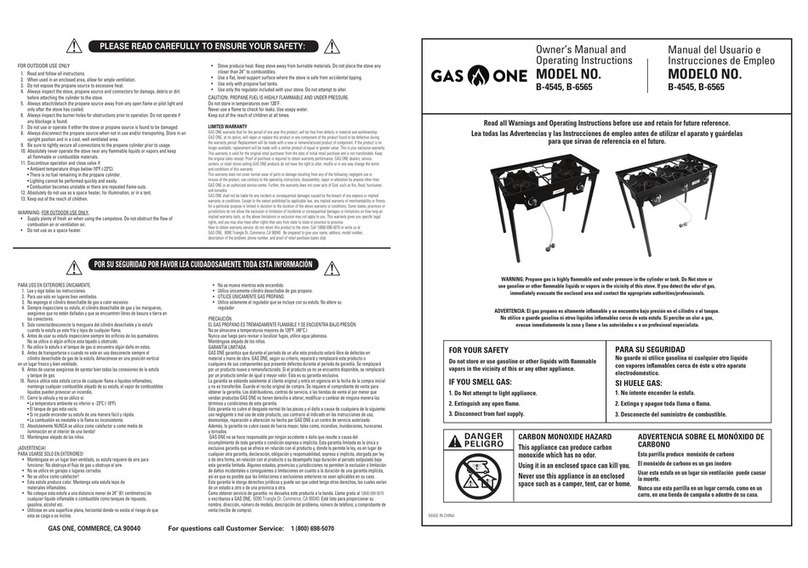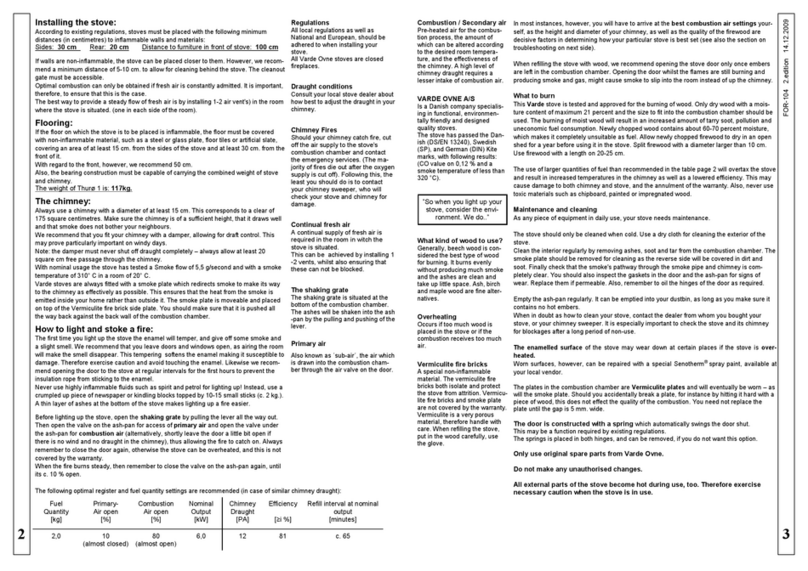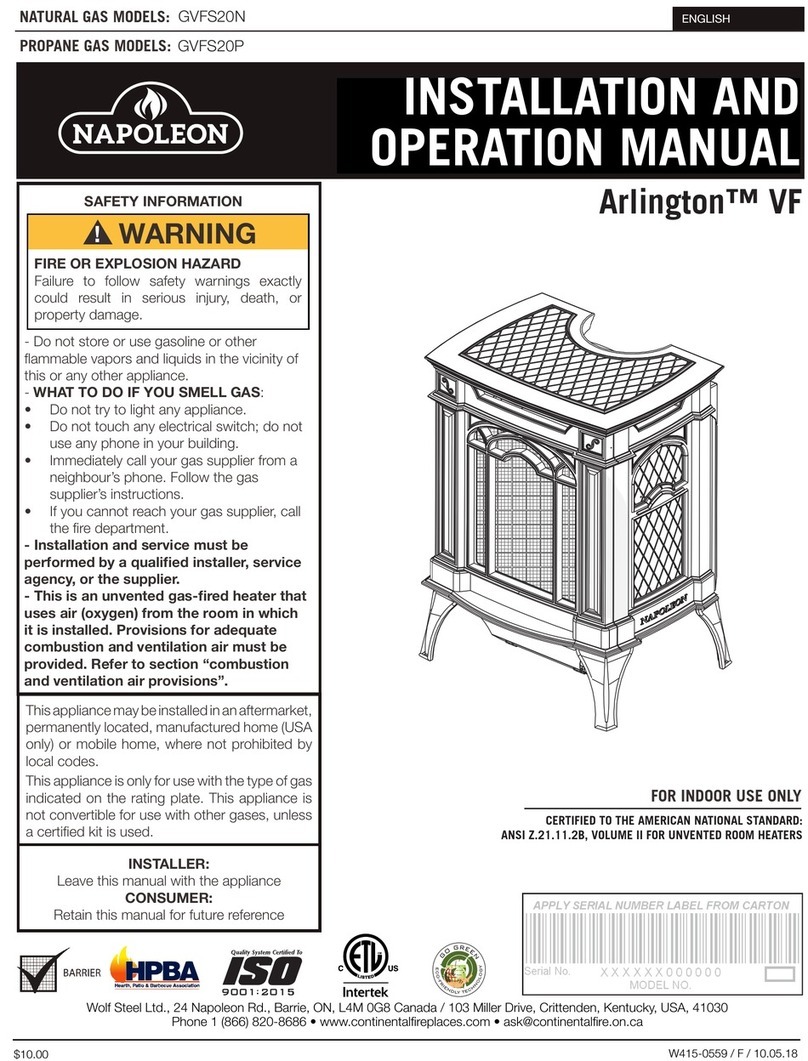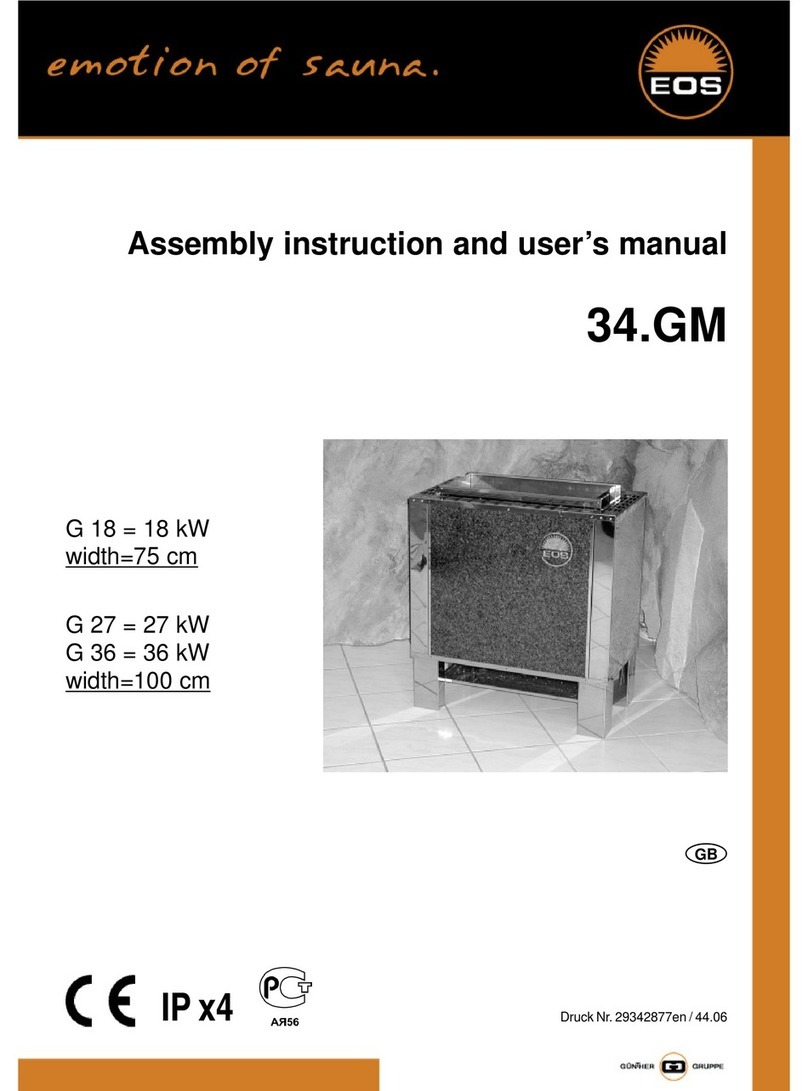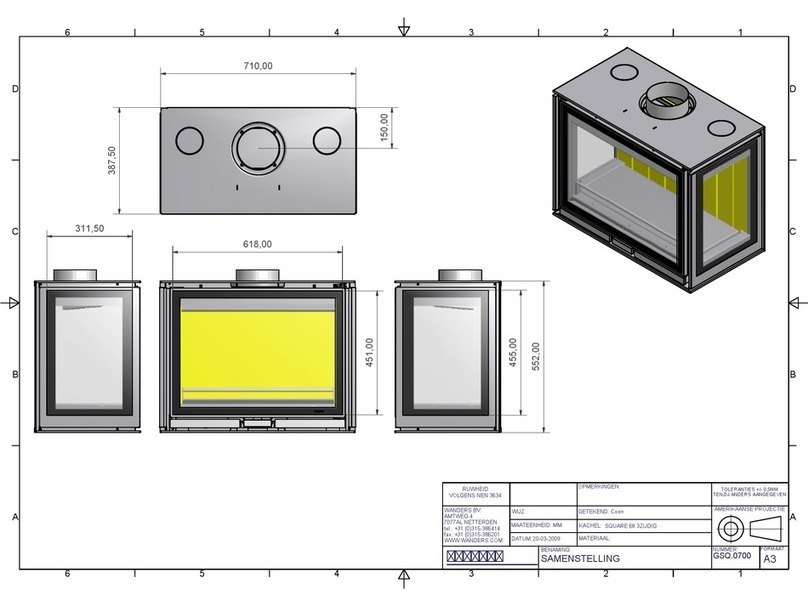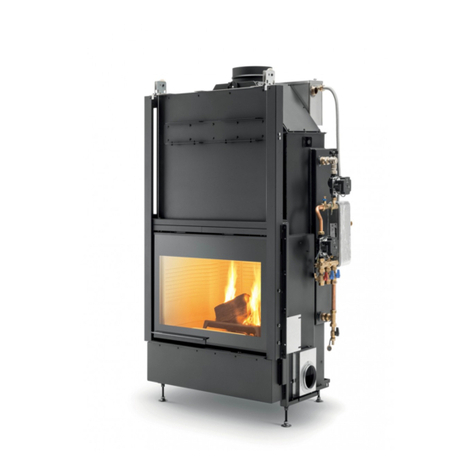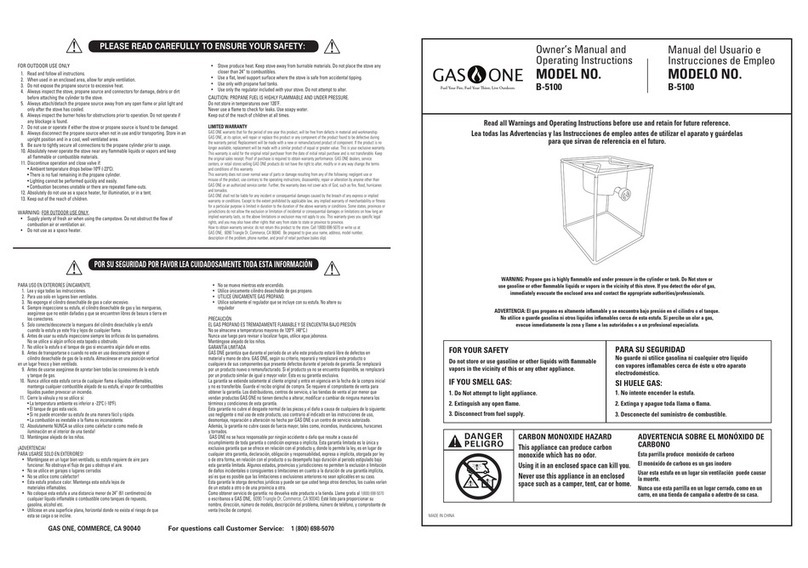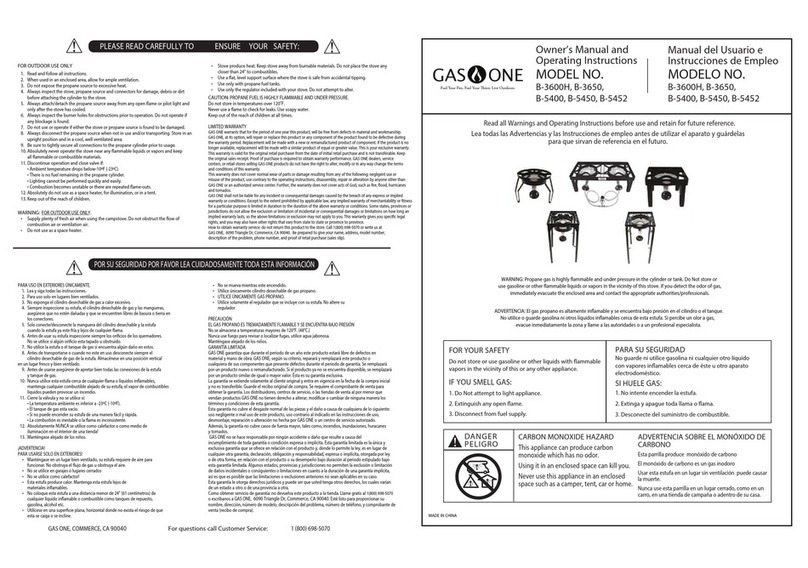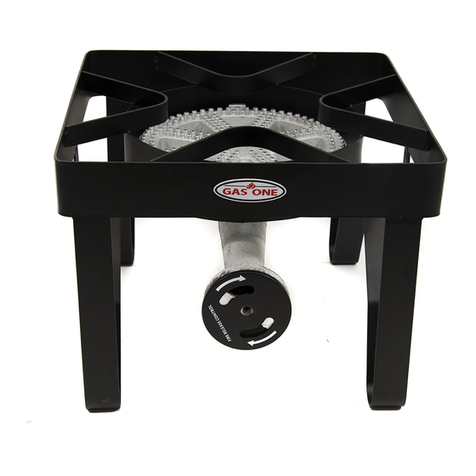
• Never refill disposable cylinders.
• Use the preset regulator that came with the stove. Do not attempt to adjust.
IF YOU SMELL GAS:
Do not store or use gasoline or other liquids with flammable vapors in the vicinity of this or any
other appliance.
FOR YOUR SAFETY
DANGER indicates an imminently hazardous situation which, if not avoided, will result in death or
serious injury.
DANGER !
WARNING indicates a potentially hazardous situation which, if not avoided, could result in death
or serious injury.
WARNING !
CAUTION indicates a potentially hazardous situation which, if not avoided, may result in minor or
moderate personal injury, or property damage.
CAUTION !
Failure to comply with the precautions and instructions provided with these stoves can result in
death, serious bodily injury and property loss or damage from hazards of fire, explosion, burn,
asphyxiation, and/or carbon monoxide poisoning. Only persons who can understand and follow
the instructions should use or service these stoves. If you need assistance or information such
as an instruction manual or labels, contact the Gas One.
DANGER !
PROPANE GENERAL SAFETY INFORMATION (cont.)
PROPANE GENERAL SAFETY INFORMATION (cont.)
1. Do not attempt to light the appliance. 2. Extinguish any open flame. 3. Disconnect from fuel supply.
• Always use soapy water to check for leakage before igniting the stove.
• Always connect the propane adapter to the stove first, then connect the 16.4 oz or 1lb propane tank.
Note: Use The LP-gas cylinder(s) used with stoves must be constructed and marked in accordance
with the specifications for LP-gas cylinders of the U.S. Department of Transportion or Transport
Canada, CAN/CSA B339.
• Always turn off and disconnect the propane tank when not in use. If not, it may lead to internal failure
due to pressure build up.
• Do not modify the supplied propane adapter.
• Do not modify the fitting of the supplied propane adapter as it’s designed to fit and be used with 1lb
propane tank Note: Use The LP-gas cylinder(s) used with stoves must be constructed and marked in
accordance with the specifications for LP-gas cylinders of the U.S. Department of Transportion or
Transport Canada, CAN/CSA B339.
• EXPLOSION - FIRE HAZARD
• Propane is heavier than air and can accumulate in low places. If you smell gas, leave the area
immediately.
• During operation, this product can be a source of ignition. Never use the stove in spaces that contain
or may contain volatile or airborne combustibles, or products such as gasoline, solvents, paint thinner,
dust particles or unknown chemicals.
• Provide adequate clearances around air openings into the combustion chamber.
DANGER !
Not for home or recreational vehicle use.
WARNING !!
CARBON MONOXIDE HAZARD
• This stove is a combustion appliance. All combustion appliances produce carbon monoxide (CO)
during the combustion process. This product is designed to produce extremely minute,
non-hazardous amounts of CO if used and maintained in accordance with all warnings and
instructions. Do not block air flow into or out of the stove.
• For outdoor use only.
• Never use inside house, camper, tent, vehicle or other unventilated or enclosed areas.
This stove consumes air (oxygen). Do not use in unven- tilated or enclosed areas to avoid
endangering your life.
WARNING !
• SERVICE SAFETY
• Use as a cooking appliance only.
WARNING !
!
• Propane gas is heavier than air and leaking propane will sink to the lowest level possible.
It can ignite by ignition sources including matches, lighters, sparks or open flames of any kind many
feet away from the original leak. Use only propane gas set up for vapor withdrawal.
• Propane gas should be stored or used in compliance with local ordinances and codes or with
ANSI/NFPA 58. Disconnect/Turn off propane when not in use.
WARNING
DO NOT leave the butane canister in the butane compartment when the propane tank is being used.
ALWAYS REMOVE THE BUTANE CANISTER AFTER USE.
DANGER !!
• Never store propane near high heat, open flames, pilot lights, direct sunlight, other ignition sources
or where temperatures exceed 120 degrees F (49°C).
• Never install or remove propane tank while outdoor stove is lighted, near flame, pilot lights, other
ignition sources or while outdoor stove is hot to touch.
We cannot foresee every use which may be made of our oroducts. Check with your local fire safety
authority if you have questions about use. Other standards govern the use of fuel gases and heat
producing products for specific uses. Your local authorities can advise you about these.
• Carbon Monoxide (CO) poisoning produces flu-like symtoms, watery eyes, headaches, dizziness,
fatigue and possibly death. You can’t see it and you can’t smell it. It’s an invisible killer. If these
symptoms are present during operation of this product get fresh air immediately!
• Keep all connections and fittings clean. Inspect propane cylinder and stove propane connections for
damage before attaching.
• During set up, check all connections and fittings for leaks using soapy water. Never use a flame.
Bubbles indicate a leak. Check that the connection is not cross-threaded and that it is tight. Perform
anoth- er leak check. If there is still a leak, remove the cylinder and contact
Gas One for service or repairs.
• Clean stove frequently to avoid grease accumulation and possible grease fires.
•This product is fueled by propane gas. Propane gas is invisible, odorless, and flammable.
An odorant is normally added to help detect leaks and can be described as a “rotten egg” smell.
The odorant can fade over time so leaking gas is not always detectable by smell alone.
Minimum clearances from combustible materials: 12 inches from the sides & 48 inches from the top.




